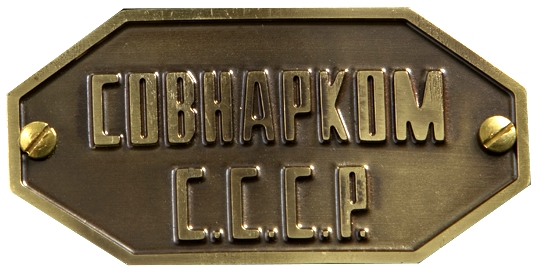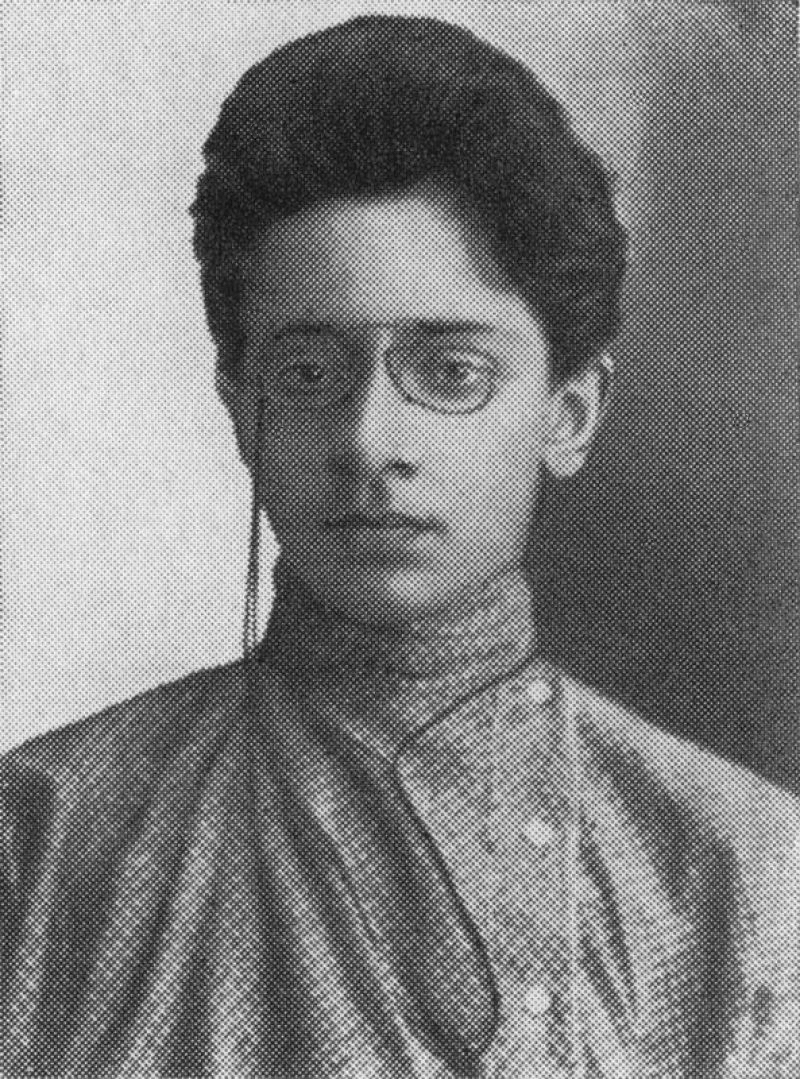|
All-Russian Central Executive Committee
The All-Russian Central Executive Committee ( rus, Всероссийский Центральный Исполнительный Комитет, Vserossiysky Centralny Ispolnitelny Komitet, VTsIK) was the highest legislative, administrative and revising body of the Russian Soviet Federative Socialist Republic (Russian SFSR) from 1917 until 1937. Although the All-Russian Congress of Soviets had supreme authority, in periods between its sessions its powers were passed to VTsIK. Organization The 1918 Russian Constitution required that the VTsIK convene the All-Russian Congress of Soviets no fewer than two times a year (Statute 26 of Article III). Additional Congresses could be called by the VTsIK or on the request of local Soviets. The VTsIK was elected by a full Congress, with no more than 200 individuals. It was completely subordinate to the Congress. The functions of the Collegiate or the Presidium were not declared in the Constitution, but presumably they were supposed to b ... [...More Info...] [...Related Items...] OR: [Wikipedia] [Google] [Baidu] |
Russian Soviet Federative Socialist Republic
The Russian Soviet Federative Socialist Republic, Russian SFSR or RSFSR ( rus, Российская Советская Федеративная Социалистическая Республика, Rossíyskaya Sovétskaya Federatívnaya Socialistíčeskaya Respúblika, rɐˈsʲijskəjə sɐˈvʲetskəjə fʲɪdʲɪrɐˈtʲivnəjə sətsɨəlʲɪˈsʲtʲitɕɪskəjə rʲɪˈspublʲɪkə, Ru-Российская Советская Федеративная Социалистическая Республика.ogg), previously known as the Russian Soviet Republic and the Russian Socialist Federative Soviet Republic as well as being unofficially known as Soviet Russia,Declaration of Rights of the laboring and exploited people, article I. the Russian Federation or simply Russia, was an independent federal socialist state from 1917 to 1922, and afterwards the largest and most populous of the Soviet socialist republics of the Soviet Union (USSR) from 1922 to 1991, until becoming a ... [...More Info...] [...Related Items...] OR: [Wikipedia] [Google] [Baidu] |
Marxists
Marxism is a left-wing to far-left method of socioeconomic analysis that uses a materialist interpretation of historical development, better known as historical materialism, to understand class relations and social conflict and a dialectical perspective to view social transformation. It originates from the works of 19th-century German philosophers Karl Marx and Friedrich Engels. As Marxism has developed over time into various branches and schools of thought, no single, definitive Marxist theory exists. In addition to the schools of thought which emphasize or modify elements of classical Marxism, various Marxian concepts have been incorporated and adapted into a diverse array of social theories leading to widely varying conclusions. Alongside Marx's critique of political economy, the defining characteristics of Marxism have often been described using the terms dialectical materialism and historical materialism, though these terms were coined after Marx's death and their ... [...More Info...] [...Related Items...] OR: [Wikipedia] [Google] [Baidu] |
Historical Legislatures
History (derived ) is the systematic study and the documentation of the human activity. The time period of event before the invention of writing systems is considered prehistory. "History" is an umbrella term comprising past events as well as the memory, discovery, collection, organization, presentation, and interpretation of these events. Historians seek knowledge of the past using historical sources such as written documents, oral accounts, art and material artifacts, and ecological markers. History is not complete and still has debatable mysteries. History is also an academic discipline which uses narrative to describe, examine, question, and analyze past events, and investigate their patterns of cause and effect. Historians often debate which narrative best explains an event, as well as the significance of different causes and effects. Historians also debate the nature of history as an end in itself, as well as its usefulness to give perspective on the problems of the ... [...More Info...] [...Related Items...] OR: [Wikipedia] [Google] [Baidu] |
Government Of The Soviet Union
The Government of the Soviet Union ( rus, Прави́тельство СССР, p=prɐˈvʲitʲɪlʲstvə ɛs ɛs ɛs ˈɛr, r=Pravítelstvo SSSR, lang=no), formally the All-Union Government of the Union of Soviet Socialist Republics, commonly abbreviated to Soviet Government, was the executive and administrative organ of state in the former Soviet Union. It had four different names throughout its existence; Council of People's Commissars (1923–1946), Council of Ministers (1946–1991), Cabinet of Ministers (January – August 1991) and Committee on the Operational Management of the National Economy (August–December 1991). It also was known as Workers-Peasants Government of the Soviet Union. The government was led by a chairman, most commonly referred to as " premier" by outside observers. The chairman was nominated by the Central Committee of the Communist Party of the Soviet Union (CPSU) and elected by delegates at the first plenary session of a newly elected Supreme Sov ... [...More Info...] [...Related Items...] OR: [Wikipedia] [Google] [Baidu] |
Supreme Soviet
The Supreme Soviet (russian: Верховный Совет, Verkhovny Sovet, Supreme Council) was the common name for the legislative bodies (parliaments) of the Soviet socialist republics (SSR) in the Union of Soviet Socialist Republics (USSR). These soviets were modeled after the Supreme Soviet of the USSR, established in 1938, and were nearly identical. State-approved delegates to the Supreme Soviets were periodically elected unopposed in show elections. The first free or semi-free elections took place during '' perestroika'' in late 1980s, in which Supreme Soviets themselves were no longer directly elected. Instead, Supreme Soviets were appointed by directly-elected Congresses of People's Deputies based somewhat on the Congresses of Soviets that preceded the Supreme Soviets. The soviets until then were largely rubber-stamp institutions, approving decisions handed to them by the Communist Party of the USSR or of each SSR. The soviets met infrequently (often only twi ... [...More Info...] [...Related Items...] OR: [Wikipedia] [Google] [Baidu] |
Central Executive Committee Of The All-Union Congress Of Soviets
The All-Union Central Executive Committee (russian: Всесоюзный Центральный исполнительный комитет, Vsesoyuznyy Tsentral'nyy ispolnitel'nyy komitet) was the most authoritative governing body of the USSR during the interims of the sessions of the All-Union Congress of Soviets. Established in 1922 by the First All-Union Congress of Soviets (see Treaty on the Creation of the USSR), in 1938 it was replaced by the Presidium of the Supreme Soviet of first convocation. Initially the Committee consisted of four members, after 1925 there were seven. The Kazakh and Kirghiz SSRs were created in 1936 and did not have representatives in the Committee, as it dissolved just two years later. Description The Central Executive Committee was created with adoption of the Treaty on the Creation of the USSR in December of 1922. The Central Executive Committee was elected by the Congress of Soviet to govern on its behalf whenever the Congress of Soviets w ... [...More Info...] [...Related Items...] OR: [Wikipedia] [Google] [Baidu] |
Mikhail Kalinin
Mikhail Ivanovich Kalinin (russian: link=no, Михаи́л Ива́нович Кали́нин ; 3 June 1946), known familiarly by Soviet citizens as "Kalinych", was a Soviet politician and Old Bolshevik revolutionary. He served as head of state of the Russian Soviet Federative Socialist Republic and later of the Soviet Union from 1919 to 1946. From 1926, he was a member of the Politburo of the Communist Party of the Soviet Union. Born to a peasant family, Kalinin worked as a metal worker in Saint Petersburg and took part in the 1905 Russian Revolution as an early member of the Bolsheviks. During and after the October Revolution, he served as mayor of Petrograd (St. Petersburg). After the revolution, Kalinin became the head of the new Soviet state, as well as a member of the Central Committee of the Communist Party and the Politburo. Kalinin remained the titular head of state of the Soviet Union after the rise of Joseph Stalin, but held little real power or influence. He ... [...More Info...] [...Related Items...] OR: [Wikipedia] [Google] [Baidu] |
Mikhail Vladimirsky
Mikhail Fyodorovich Vladimirsky (russian: Михаи́л Фёдорович Влади́мирский; – 2 April 1951) was a Soviet politician and Bolshevik revolutionary who was for a short period of time, the Chairman of the All-Russian Central Executive Committee. Biography Mikhail Vladimirsky was born in 1874, as the son of Orthodox priest and Duma-member Fyodor Vladimirsky.The Occult in Russian and Soviet Culture edited by Bernice Glatzer Rosenthal; p. 260 He became involved with the revolutionary movement and in the early 1890s in |
Yakov Sverdlov
Yakov Mikhailovich Sverdlov (russian: Яков Михайлович Свердлов; 3 June O. S. 22 May">Old_Style_and_New_Style_dates.html" ;"title="nowiki/>Old Style and New Style dates">O. S. 22 May 1885 – 16 March 1919) was a Bolshevik Party administrator and chairman of the All-Russian Central Executive Committee from 1917 to 1919. He is sometimes regarded as the first head of state of the Soviet Union, although it was not established until 1922, three years after his death. Born in Nizhny Novgorod to a Jewish family active in revolutionary politics, Sverdlov joined the Russian Social Democratic Labour Party in 1902 and supported Vladimir Lenin's Bolshevik faction during an ideological split. He was active in the Urals during the failed Revolution of 1905, and in the next decade, he was subjected to constant imprisonment and exile. After the 1917 February Revolution overthrew the monarchy, Sverdlov returned to Petrograd and was appointed chairman of the Party Secr ... [...More Info...] [...Related Items...] OR: [Wikipedia] [Google] [Baidu] |
Presidium Of The Supreme Soviet Of The Russian Soviet Federative Socialist Republic
The Presidium of the Supreme Soviet of the Russian Soviet Federative Socialist Republic was the collective head of state of the Russian SFSR and the permanent body of the Supreme Soviet of the Russian SFSR that was accountable to the Supreme Soviet of the Russian SFSR in its activity and, within the nominal limits prescribed by the Constitution of the Russian SFSR, performed functions of the highest state power in the Russian SFSR between 1938 and 1990. It was elected by the Supreme Soviet of the Russian Soviet Federative Socialist Republic to perform the Supreme Soviet's activities when it was not in session, which, in practice, was most of the year. History Predecessor offices The office was created as a replacement for the Central Executive Committee of the All-Russian Congress of Soviets. Political significance Since the Russian SFSR enjoyed only limited autonomy within the Soviet Union until late into the perestroika period and since real executive power was in the ha ... [...More Info...] [...Related Items...] OR: [Wikipedia] [Google] [Baidu] |
1936 Constitution Of The Soviet Union
Events January–February * January 20 – George V of the United Kingdom and the British Dominions and Emperor of India, dies at his Sandringham Estate. The Prince of Wales succeeds to the throne of the United Kingdom as King Edward VIII. * January 28 – Britain's King George V state funeral takes place in London and Windsor. He is buried at St George's Chapel, Windsor Castle * February 4 – Radium E (bismuth-210) becomes the first radioactive element to be made synthetically. * February 6 – The 1936 Winter Olympics, IV Olympic Winter Games open in Garmisch-Partenkirchen, Germany. * February 10–February 19, 19 – Second Italo-Ethiopian War: Battle of Amba Aradam – Italian forces gain a decisive tactical victory, effectively neutralizing the army of the Ethiopian Empire. * February 16 – 1936 Spanish general election: The left-wing Popular Front (Spain), Popular Front coalition takes a majority. * February 26 – February 26 Inci ... [...More Info...] [...Related Items...] OR: [Wikipedia] [Google] [Baidu] |
Soviet Union
The Soviet Union,. officially the Union of Soviet Socialist Republics. (USSR),. was a List of former transcontinental countries#Since 1700, transcontinental country that spanned much of Eurasia from 1922 to 1991. A flagship communist state, it was nominally a Federation, federal union of Republics of the Soviet Union, fifteen national republics; in practice, both Government of the Soviet Union, its government and Economy of the Soviet Union, its economy were highly Soviet-type economic planning, centralized until its final years. It was a one-party state governed by the Communist Party of the Soviet Union, with the city of Moscow serving as its capital as well as that of its largest and most populous republic: the Russian Soviet Federative Socialist Republic, Russian SFSR. Other major cities included Saint Petersburg, Leningrad (Russian SFSR), Kyiv, Kiev (Ukrainian Soviet Socialist Republic, Ukrainian SSR), Minsk (Byelorussian Soviet Socialist Republic, Byelorussian SSR), Tas ... [...More Info...] [...Related Items...] OR: [Wikipedia] [Google] [Baidu] |

.jpg)



